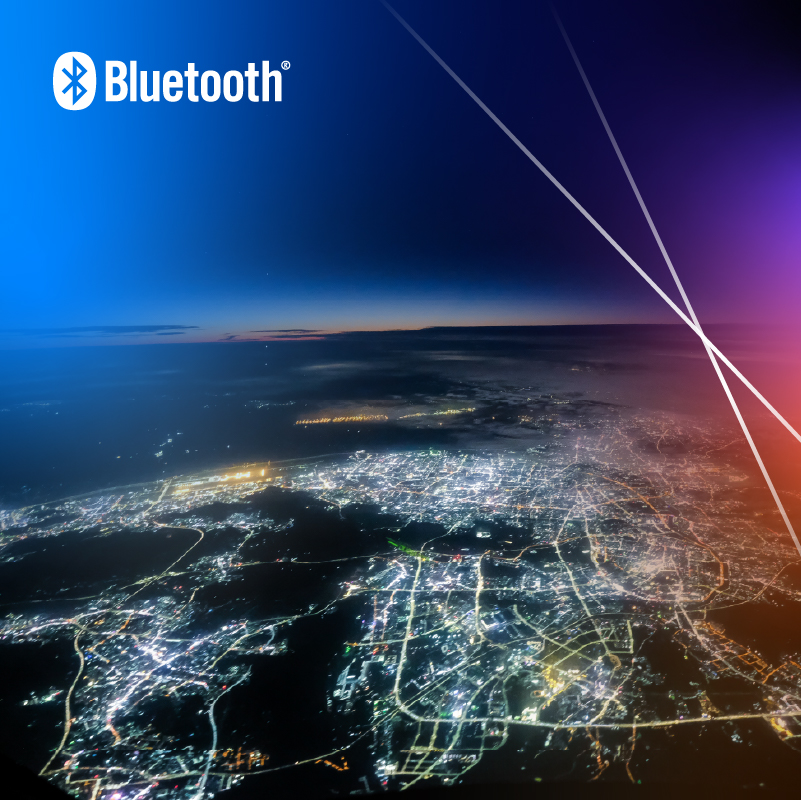Bluetooth is the global benchmark for safe, flexible, dependable, effortless wireless connection. Every day, billions of Bluetooth® devices are being used in countless ways by people, businesses, and industry around the world, with many more on the way. It is no exaggeration to say that the world depends on Bluetooth technology.
The Bluetooth Special Interest Group (SIG), in partnership with our member companies, works to continuously improve the technology’s capabilities, performance, reliability, and security. We are also responsible for one of the most recognizable brands on the planet.
The value of the Bluetooth brand
It is easy to take for granted how ubiquitous Bluetooth connectivity is; it is everywhere, often in unexpected places, powering amazing experiences. The ever-present nature of Bluetooth technology is due, in large part, to the hard work and commitment of tens of thousands of dedicated member companies working together to create, proliferate, and solidify Bluetooth as a global standard for wireless connectivity.
Thanks to this standardization, when you see the Bluetooth logo on a device, you know that it will seamlessly connect with other Bluetooth solutions. As such, it is important for everyone in the Bluetooth community to help ensure we are using standardized terminology to support our standardized technology.

Standardizing communication for Bluetooth functionality
Earlier this year, the Bluetooth SIG released guidance for members that encourages a standardized approach to how we communicate Bluetooth features to end users across all industries. This guide highlights how Bluetooth members can showcase supported Bluetooth functionality in their product packaging and promotional materials, such as product data sheets and web pages. It provides recommendations for effectively communicating support for essential aspects of Bluetooth technology and aims to achieve three goals:
- Encourage consistent public communication of supported Bluetooth functionality
- Help customers easily identify Bluetooth technology and capabilities in products
- Increase customer confidence that products are up to date with the latest Bluetooth technology
Each new version of the Bluetooth® Core Specification includes all previously defined functionality as well as any new features introduced. Additionally, the vast majority of Bluetooth features are optional to implement, so the specification version alone does not indicate which features or capabilities a product supports.
As such, you are strongly encouraged to avoid communicating the version of the Bluetooth® Core Specification against which a product was qualified (e.g., Bluetooth Core 6.0) to describe the Bluetooth functionality supported in that product. Doing so can create misunderstandings about the product’s capabilities (e.g., a device qualified to Bluetooth Core 6.0 is not required to contain any of the new features added in Bluetooth Core 6.0 or even in Bluetooth Core 5.0).

Instead, focus on clearly and accurately describing the specific Bluetooth features your product supports, emphasizing those most important to your target customers, in product packaging, documentation, and promotional materials.
Whether you are a member company that is developing end-use products (e.g., mice, headphones, electronic shelf labels) or creating enabling technology products (e.g., chipsets, stacks, modules), we encourage you to refer to this guidance when publicly communicating supported Bluetooth functionality.
Ensuring confidence in your Bluetooth products
Whatever your role in the Bluetooth community, you are part of something big, helping to promote and develop one of the most powerful and transformative technologies. The importance of what you do to advance and protect the Bluetooth standard cannot be overstated.
All of us, from Bluetooth SIG staff to community device creators and innovators to product and marketing managers and more, need to communicate with unified terminology regardless of market, industry, or region. It is essential to maintaining the value of the Bluetooth brand while ensuring end-user confidence in your products to support Bluetooth capabilities.
See the guide for Communicating Supported Bluetooth® Functionality.

Bluetoothは安全で高い柔軟性と信頼性を持ち、容易に使用できるワイヤレス接続の世界的な指標となっています。毎日、数十億台に上るBluetooth®デバイスが世界中で、個人、企業、工場や研究施設などにおいて無数の用途で活用されており、今後もその活躍の場は増えていくと見られています。この世界でBluetooth技術が必要不可欠なものになっているといっても過言ではないでしょう。
Bluetooth SIG(Special Interest Group)はメンバー企業とともに、Bluetooth技術の能力、性能、信頼性、安全性の向上に絶えず取り組むと同時に、地球上で最も知名度の高いブランドとしてのBluetoothに対する責任も負っています。
Bluetoothブランドの価値
Bluetooth接続がどこでも利用できることは、当たり前に思いがちです。思いもよらないような場所でも広く活用されており、素晴らしい体験を提供しています。あまねく存在するというBluetooth技術の特徴は、ワイヤレス接続の世界的規格としてのBluetoothの開発、普及、強化に協力して取り組む、何万社ものメンバー企業の努力と献身に大きく負っています。
そのようにして標準化された技術だからこそ、デバイスにBluetoothロゴが付いていると、それが他のBluetoothソリューションとシームレスに接続できると認識されます。同様に、Bluetoothコミュニティの全員が、標準化された技術について表示する際には、標準化された表記を使用することが重要になります。
Bluetooth機能に関する表記の標準化
今年初め、Bluetooth SIGはあらゆる業界のエンドユーザーに対するBluetooth機能表示の標準化を促す指針を公開しました。このガイドはBluetooth SIGメンバーが製品のパッケージや、製品データおよびウェブサイトなどの販促資料にBluetooth機能の情報を表示する方法を示したものです。Bluetooth技術の主要機能へのサポートを効果的に伝えるための推奨事項を提示しており、次の3点を目的としています。
- サポートしているBluetooth機能に関する一貫性のある表示を推進する
- 購入者が製品のBluetooth技術・機能を容易に認識できるようにする
- 製品が最新のBluetooth技術をサポートしているという信頼感を高める

Bluetooth® Core Specificationの各バージョンには、それまでの機能すべてと新しく採用された機能の両方が含まれています。また、Bluetooth機能の大部分は実装が任意であるため、製品にSpecificationのバージョンを示すだけでは、製品がどの機能をサポートしているのか具体的に示していることにはなりません。
このため、製品の認証に使用されたBluetooth® Core Specification(Bluetooth Core 6.0など)だけでサポートしている機能を示すことは避けるよう、強く推奨されています。製品の機能について誤解を生じかねないことがその理由です(例:Bluetooth Core 6.0で認証された製品であっても、Bluetooth Core 6.0、さらにはBluetooth Core 5.0で追加された新機能をサポートしている必要はありません)。
その代わり、製品がサポートしているBluetooth機能を明確かつ正確に説明し、対象となるお客様にとって最も重要な機能を、製品のパッケージ、マニュアル、販促資料等で強調することに注力してください。
エンドユーザー向け製品(マウス、ヘッドホン、電子棚札など)を開発する場合も、実現技術製品(チップセット、スタック、モジュールなど)を製造する場合も、自社製品がサポートしているBluetooth機能について公に表示する際にはこのガイドをご参照ください。
自社のBluetooth製品に確かな信頼を
Bluetoothコミュニティ内で果たしている役割に関わらず、メンバーの皆様は、最も強力で革新的な技術の一つであるBluetoothの推進と発展を担う大きな存在の一員です。Bluetooth規格を発展させ守るためのメンバーによる取り組みは、この上なく重要な者です。
Bluetooth SIGのスタッフをはじめ、コミュニティを構成するデバイス開発者やイノベーターから、製品やマーケティングを担当するマネージャーに至るまで、私たち全員が、市場、業界、地域の違いにかかわらず統一された表記で情報を表示し、発信する必要があります。Bluetoothの機能をサポートしている製品に対するエンドユーザーの信頼を確かなものとするには、Bluetoothブランドの価値を維持していくことが極めて重要です。
詳しくは、「サポートしているBluetooth®機能の表示について」のガイドをご覧ください。